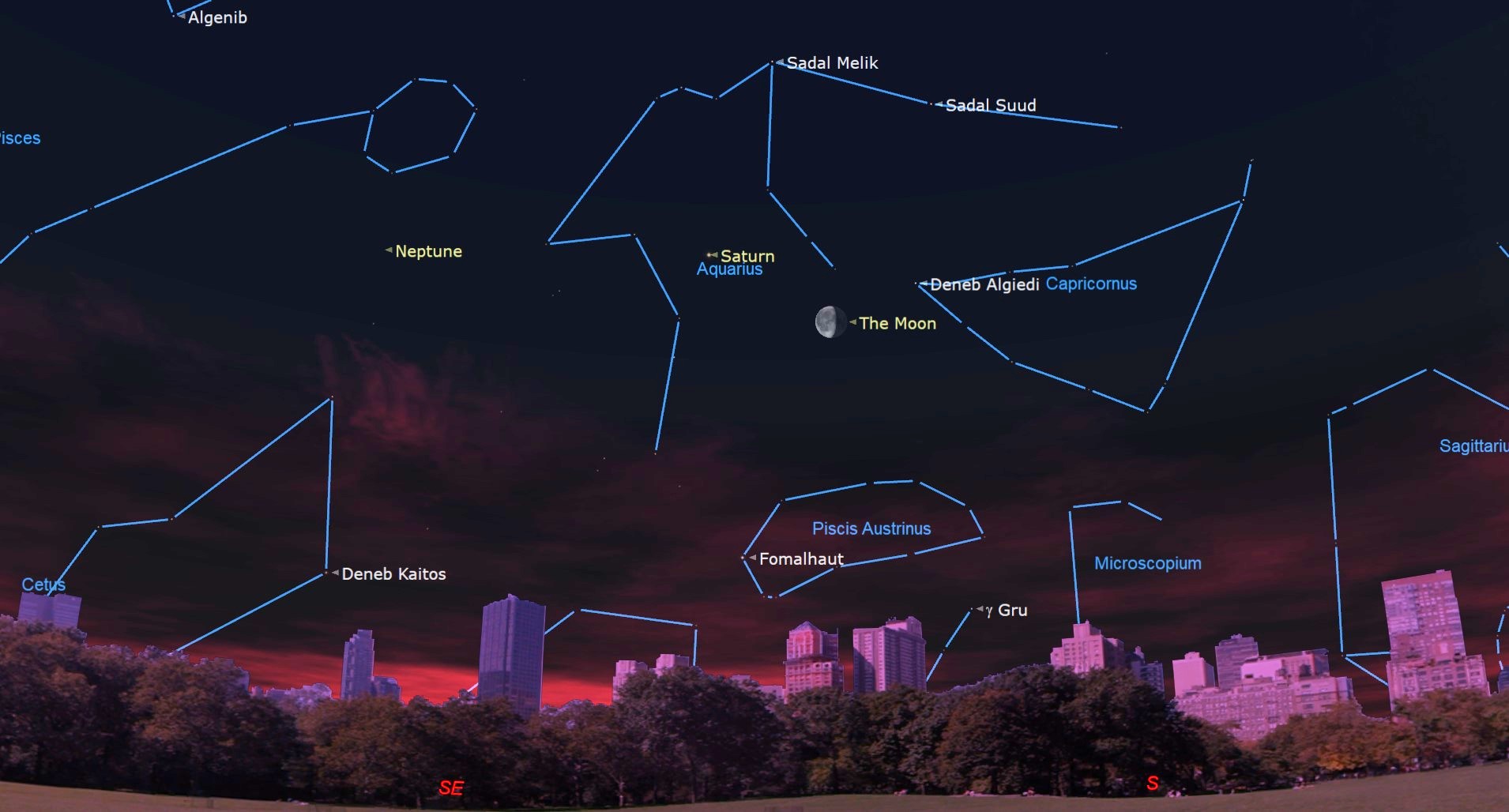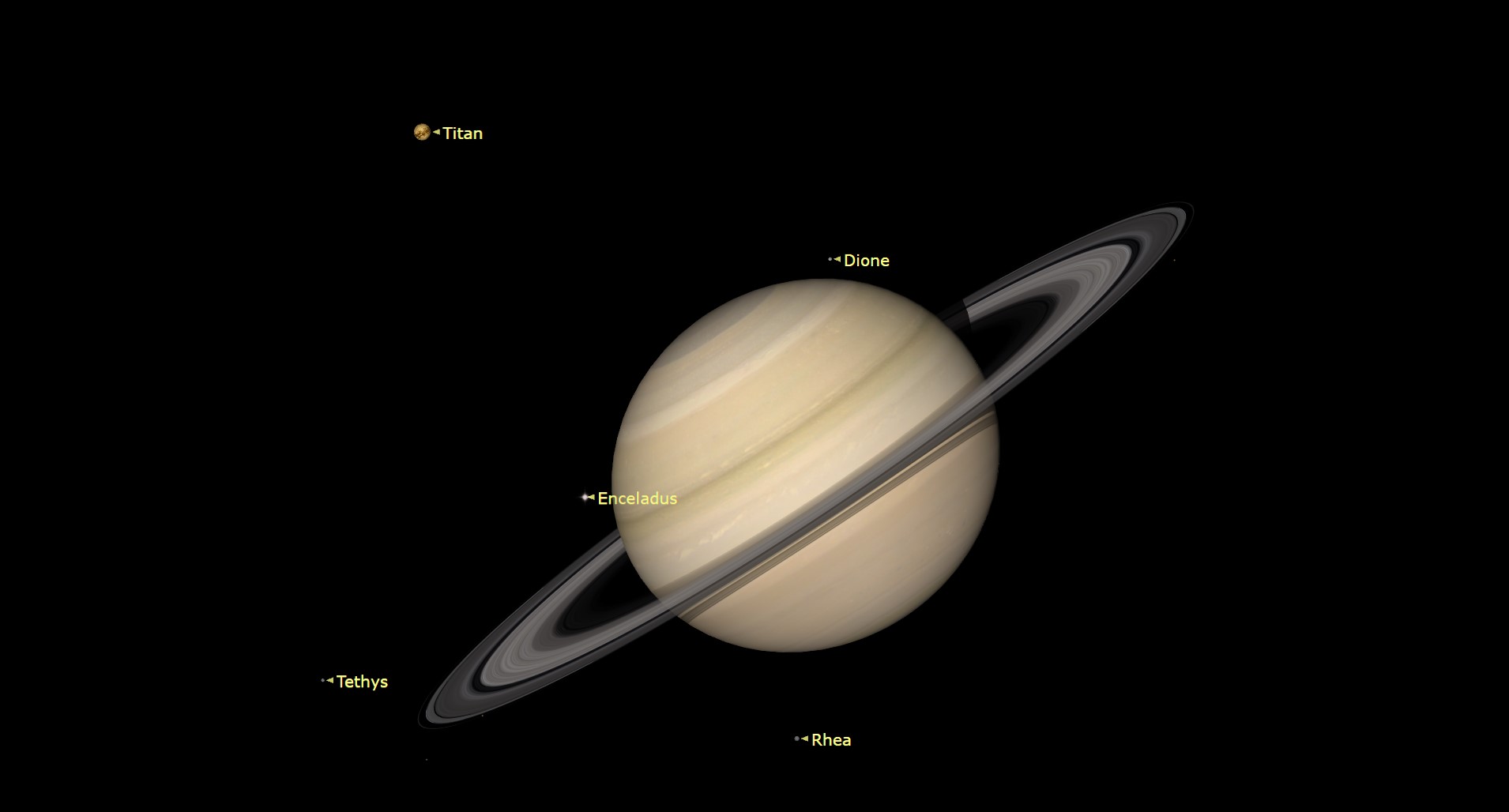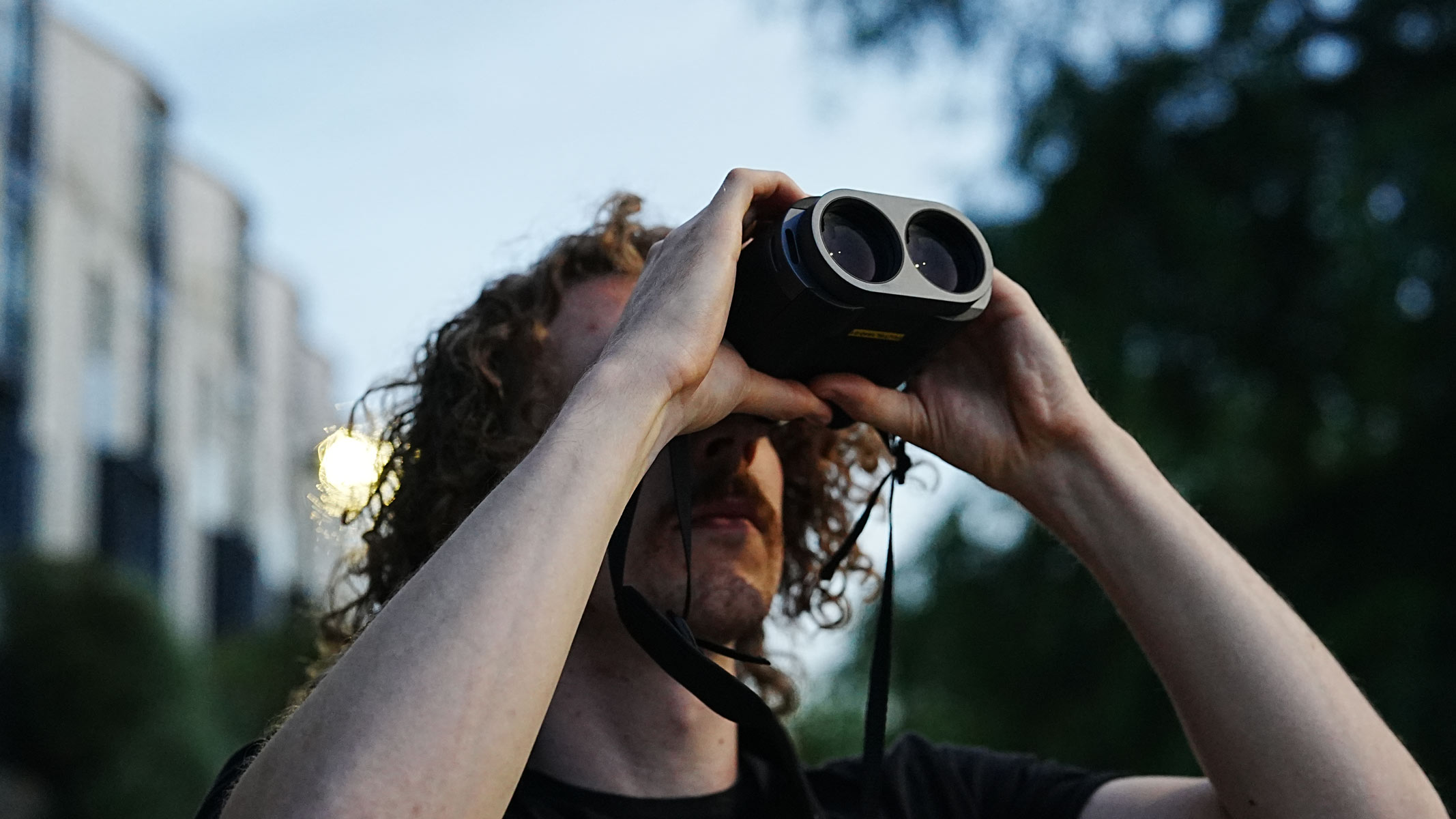Watch the moon snuggle up to Saturn in the night sky late tonight
The moon and ringed planet will be close together in the night sky heading into the weekend.

The moon makes for a great guide to locate the ringed planet Saturn in the night sky tonight.
The moon will make a close approach to Saturn in the early morning sky on Saturday (June 10) in the hours following midnight. Skywatchers in New York City will see the moon below and to the left of Saturn, with the pair separated by just under 3 degrees in the sky (about one-third of the width of your fist at arm's length). Both bodies will be located in the constellation Aquarius. The pair should be visible in the sky to the east around 2 a.m. ET (0600 GMT) on Saturday (June 10).
During the day on Friday (June 9), however, the 21-day-old moon and the gas giant planet will also share a right ascension (the celestial equivalent of longitude), in an arrangement astronomers call a conjunction.
Related: Night sky, June 2023: What you can see tonight [maps]

Want to check out Saturn's rings or the craters of the moon? We recommend the Celestron Astro Fi 102 as the top pick in our best beginner's telescope guide.
The gas giant Saturn, the solar system's second largest world after Jupiter, will have a magnitude of 0.7. The moon, meanwhile, is in the midst of its waning period when light recedes across the lunar face, but will still be much brighter during the close approach, possessing a magnitude of -12.2, with the minus prefix indicating a particularly bright object over Earth.
At the time of the conjunction on Friday, the moon will have an angular size of 32'21"3, while Saturn will have a much smaller angular size of 17"4. Don’t be fooled by these relative sizes, however, as they are only a matter of perspective from Earth.
Read more: The Native American night sky: 7 starry sights to see
Breaking space news, the latest updates on rocket launches, skywatching events and more!
Though the moon dominates the sky over Earth, only outshone and equaled in size by the sun, Saturn is vastly larger than Earth's natural satellite in real terms.
Saturn has a diameter of around 72,300 miles (116,500 kilometers), while the moon is just 2,159 miles (3,500 kilometers) wide. That means it would take 34 moons to fully loop around the equator of Saturn. Saturn's volume is 760 times that of Earth, and our planet has a volume 50 times greater than the moon; this means it would take around 3,800 moons to fill the volume of the gas giant.
Saturn also dominates the moon and its parent planet in terms of mass; the ringed gas giant is over 8,100 times more massive than the moon.
During the close approach of the moon to Saturn, the two will be too widely separated to be viewed together with the narrow field of view of a telescope, but will be tight enough to be viewed together with binoculars.
Thus, if you are hoping to catch a look at the conjunction between the moon and Saturn, our guide to the and best binoculars is a great place to start. If you want a close up look at either one individually, check out our guide on the best telescopes.
And if you're looking to take photos of the moon and Saturn or the night sky in general, check out our guide on how to photograph the moon, as well as our best cameras for astrophotography and best lenses for astrophotography.
Editor's Note: If you snap an image of the moon and Saturn, and would like to share it with Space.com’s readers, send your photo(s), comments, and your name and location to spacephotos@space.com.

Robert Lea is a science journalist in the U.K. whose articles have been published in Physics World, New Scientist, Astronomy Magazine, All About Space, Newsweek and ZME Science. He also writes about science communication for Elsevier and the European Journal of Physics. Rob holds a bachelor of science degree in physics and astronomy from the U.K.’s Open University. Follow him on Twitter @sciencef1rst.

